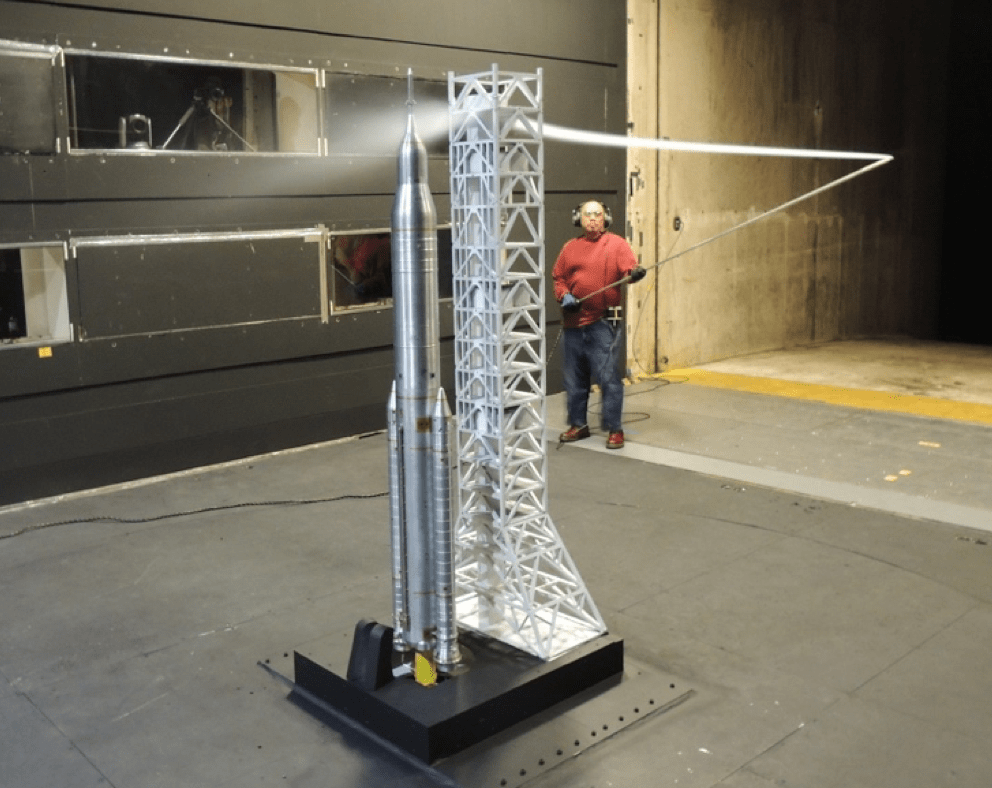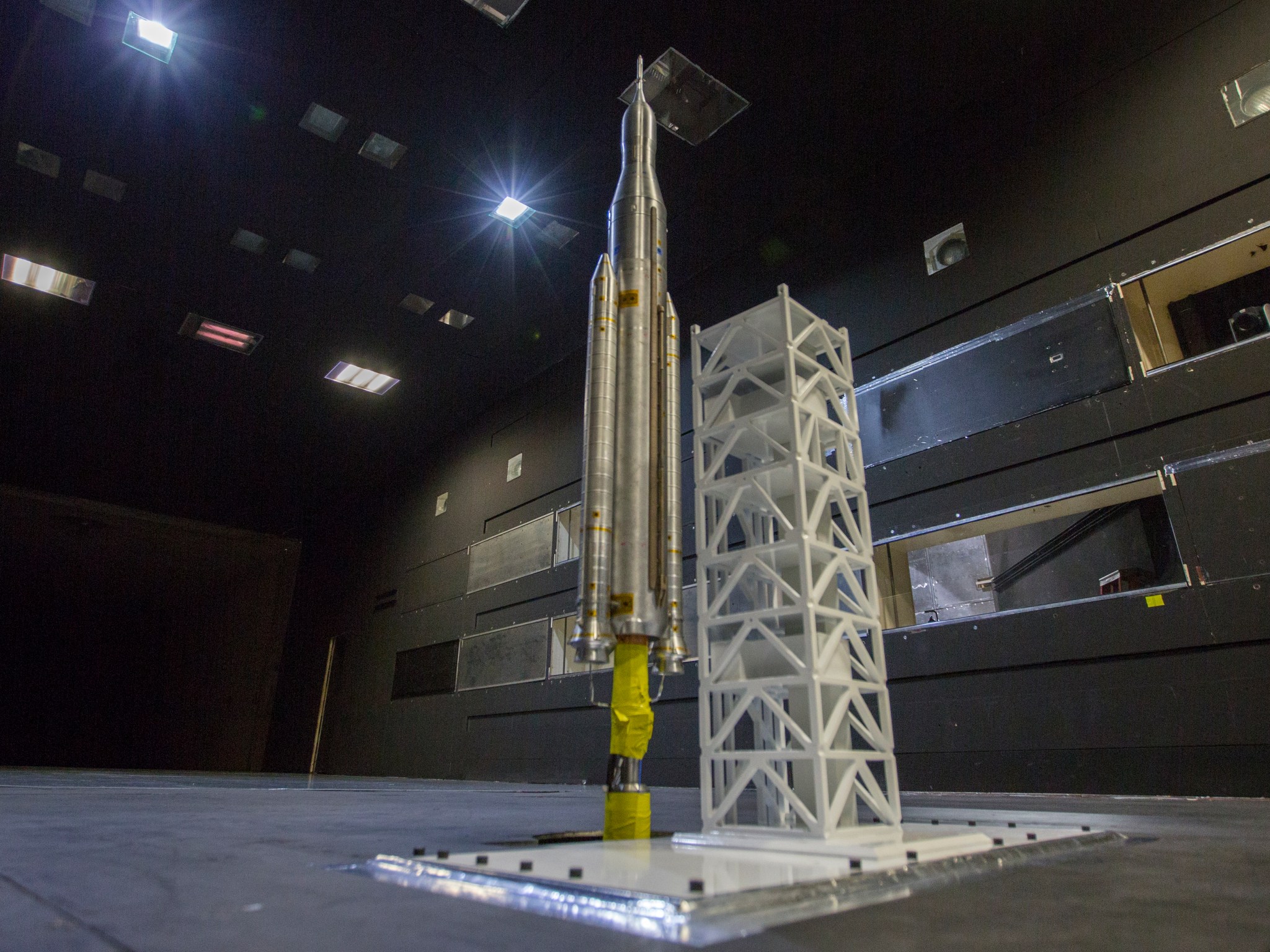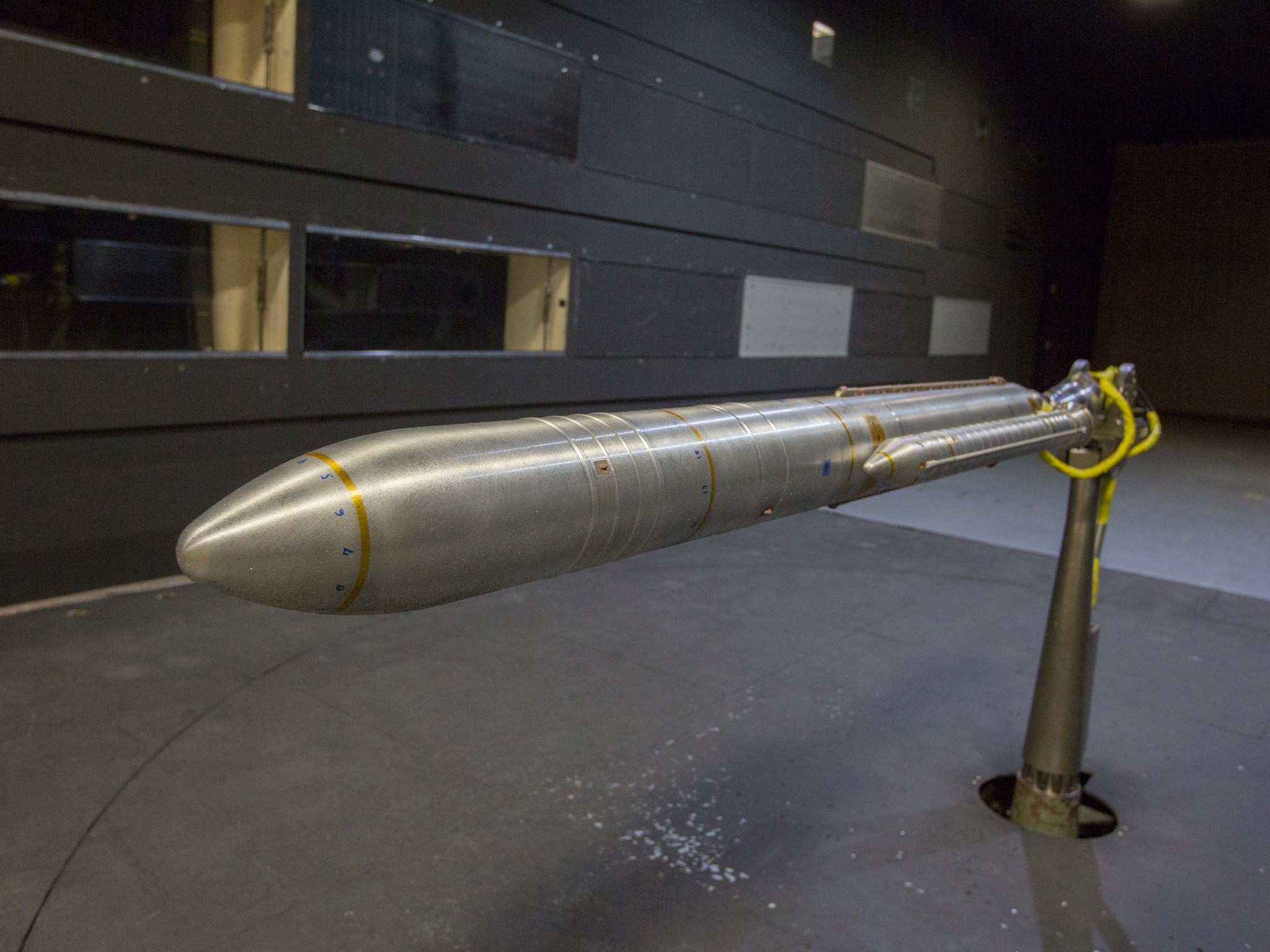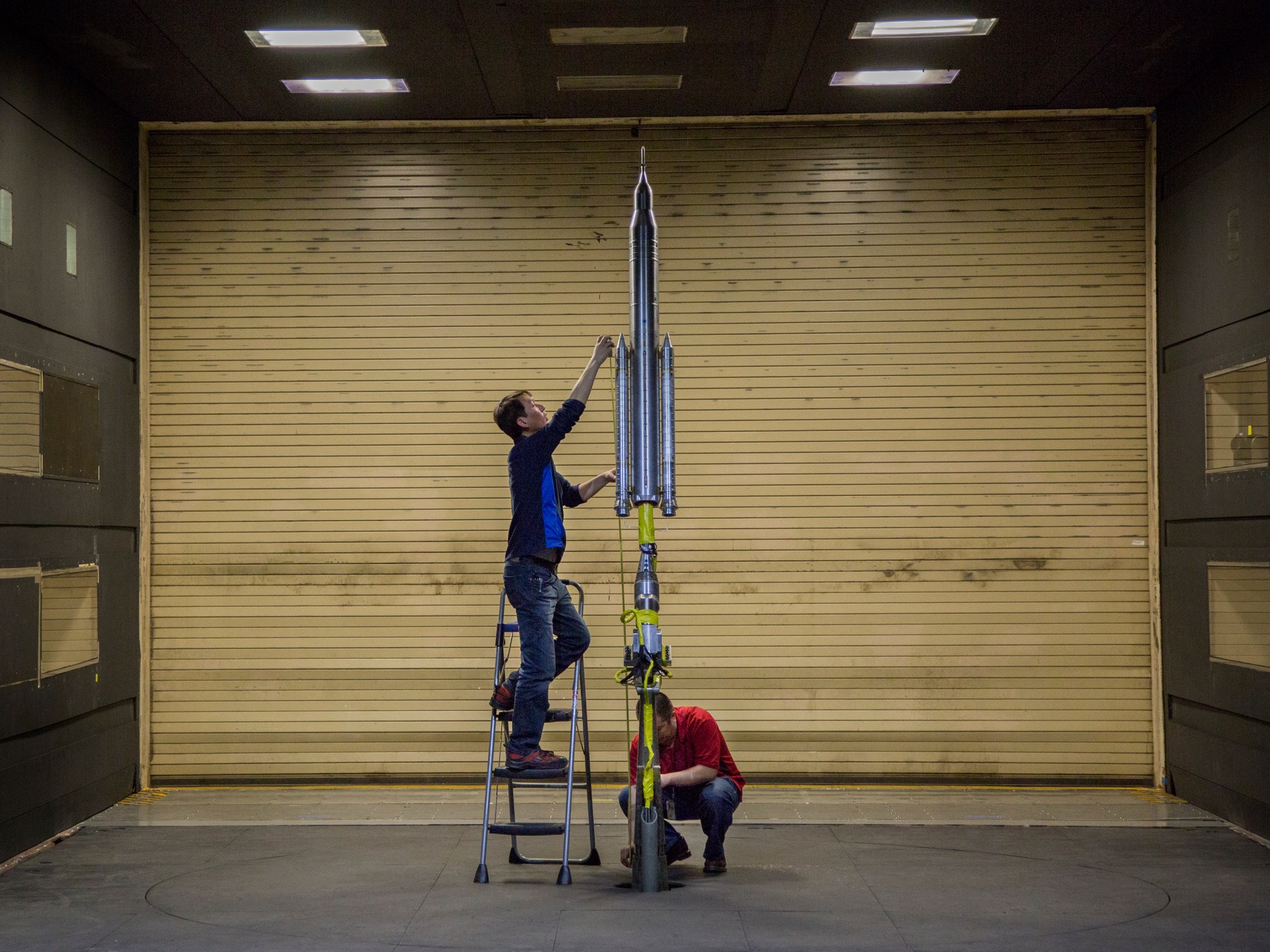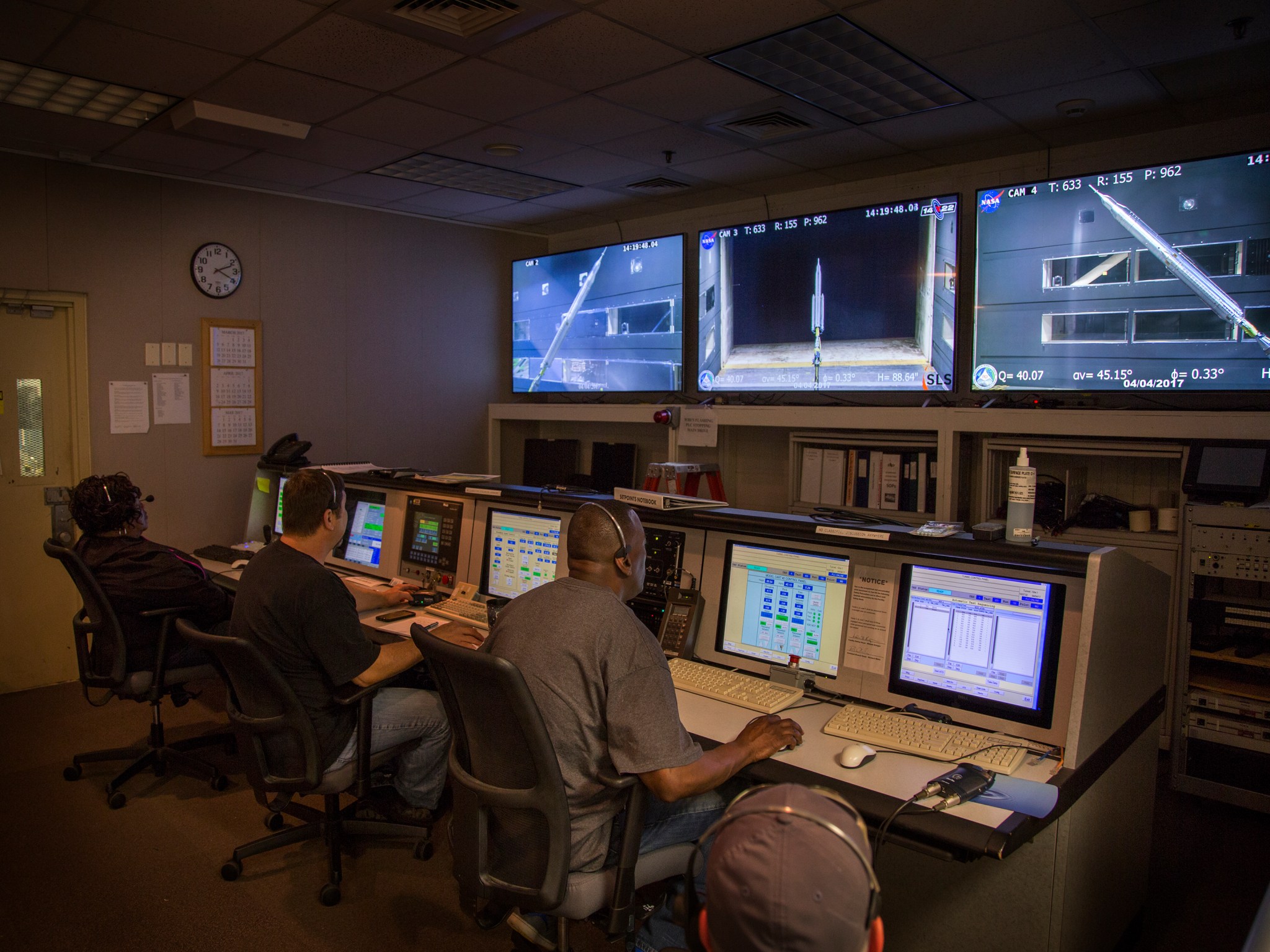The world’s most powerful rocket – NASA’s Space Launch System (SLS) – may experience ground wind gusts of up to 70 mph as it sits on the launch pad before and during lift off for future missions. Understanding how environmental factors affect the rocket will help NASA maintain a safe and reliable distance away from the launch tower during launch.
SLS model testing in NASA Langley Research Center’s 14×22-Foot Subsonic Wind Tunnel in Hampton, Virginia, is designed to simulate wind conditions. According to Langley research aerospace engineer Dave Chan, wind tunnel tests are a cost effective and efficient way to simulate situations where cross winds and ground winds affect different parts of the rocket. The guidance, navigation, and control team uses the test data as part of their simulations to identify the safety distance between the rocket and the launch tower.
SLS is designed to evolve as NASA moves crew and cargo farther into the solar system than we have ever been before. The Langley team tested the second more powerful version of the SLS rocket, known as the Block 1B, in both the crew and cargo configuration. Take a behind-the-scenes look of the hard work being done at Langley to support safe explorations to deep-space.
Sasha Ellis
NASA Langley Research Center



























